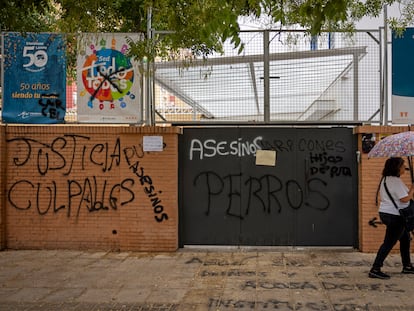
At the start of the school year, there was a festive atmosphere at the private Irlandesas de Loreto school in Seville—the institution was celebrating its 50th anniversary. However, the joy quickly turned to shock: in October, a fourteen-year-old student named Sandra took her own life shortly after classes. It soon emerged that the girl’s family had repeatedly reported bullying by classmates to the administration, but the school leadership failed to take the necessary action.
After the tragedy, a wave of outrage swept through the neighborhood. Offensive graffiti appeared on the school walls, and on social media, the alleged bullies were targeted with harassment. Parents and local residents are trying to restore a sense of normalcy, but the constant presence of police and journalists only heightens the tension. The victim’s family is awaiting the results of the investigation, while school representatives are attempting to defuse the situation without admitting fault.
Escalation of the conflict and its consequences for everyone involved
In response to the incident, the administration announced the launch of a special support program for students, but failed to explain why the official anti-bullying protocol was not activated. Meanwhile, prosecutors and police are continuing to examine the school’s actions and are analyzing Sandra’s messages to determine whether the bullying extended online. The alleged instigators are also under pressure—their names and photos have appeared online, and threats have not ceased. The girls have been forced to study remotely to avoid danger.
The parents on both sides are under immense stress. Many local residents note that the atmosphere at school and around it has become unbearable: every morning brings new graffiti, and both children and adults cannot shake a sense of anxiety. While the police presence and media attention are gradually decreasing, the tension remains. Students are trying to cope with what they have experienced, and adults are looking for ways to restore a sense of calm.
Systemic problems and the search for solutions
Psychologists emphasize that restoring normalcy requires open discussion about what happened in the classroom, acknowledging mistakes, and addressing the emotions of everyone involved. However, the school administration prefers to remain silent on the details, citing expert recommendations. Meanwhile, specialists note that ignoring signs of bullying and insufficient attention to digital safety only make the situation worse.
Teachers and school staff are also going through a difficult time: many were unaware of the complaints about bullying and now feel guilty and confused. They have to balance their work with the emotional burden of supporting students. At the sports club where Sandra trained, there are also efforts to return to a normal routine, but the absence of a friend is felt especially keenly.
For local residents, this tragedy served as a reminder of another high-profile incident that took place here many years ago. People fear that similar events could happen again if lessons aren’t learned and the approach to bullying in schools isn’t changed. On the façade of the lyceum, the crossed-out words “joy,” “justice,” “truth,” and “freedom” are still visible—values that now have lost their former meaning for many.






